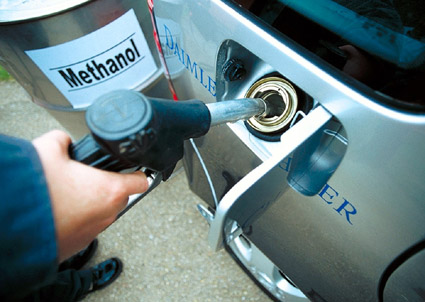Methanol might just turn out to be the fuel of the future
 London, June 3 : In a new research, scientists have suggested that methanol might just turn out to be the fuel of the future, not hydrogen.
London, June 3 : In a new research, scientists have suggested that methanol might just turn out to be the fuel of the future, not hydrogen.
For years, many companies, governments and researchers have predicted that our energy future must lie with hydrogen, the universe’s simplest element.
The mooted hydrogen economy would use the gas to store and transport renewable or low-carbon energy, and power fuel cells in the transport sector or in portable electronics.
But, creating the necessary society-wide infrastructure has proved difficult and expensive to get off the ground.
Now, according to a report in New Scientist, a rival idea, first suggested in 2006 by Nobel chemistry laureate George Olah at the University of Southern California, has received a boost.
The methanol economy, according to its supporters, could be with us much sooner than the hydrogen one.
Olah’s rationale is that modifying our existing oil and petrol-focused infrastructure to run on methanol will be much easier than refitting the world’s liquid-fuel-based economy to deal with an explosive gas.
Methanol has already been used to power portable gadgets and could potentially power vehicles and other devices.
Now, US chemists have worked out the conditions needed to make the feedstock for methanol production using renewable energy.
The best way to make methanol is by steam reforming methane, produced from syngas - a mixture of hydrogen and carbon monoxide - which can be made via the Fischer-Tropsch process.
This uses catalysts to convert the syngas into liquid hydrocarbons.
However, the whole point of the methanol economy would be to create a greener society, so any syngas must come from an environmentally friendly source, not fossil fuels.
Now, chemist Scott Barnett at Northwestern University in Evanston, Illinois, and colleagues have shown that a solid oxide electrolysis cell, more normally used to split water into hydrogen and oxygen, could be that source.
“Using a mix of one part CO2, one part hydrogen and two parts water in the device generates syngas at a rate which compares favourably with the processes used to make it from natural gas,” said Barnett.
At peak conditions of 800 degree Celsius and 1.3 volts, the system can produce 7 standard cubic centimetres of syngas per minute for every square centimetre of the electrolysis cell’s surface.
Olah thinks that Barnett’s study is a useful one.
“This (methanol economy) approach is now starting to be implemented around the world,” he said. “New methanol plants are being built in China, South Korea, Japan and Iceland,” he added. (ANI)